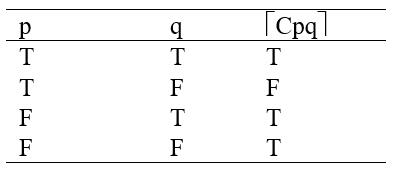On Reasoning Nature of Editorial Essay in Indonesian Newspaper
Abstract
Reasoning ability is fundamental for college students as well as professionals since it reflects their intellectual quality. This paper is aimed at revealing the reasoning nature in the editorial essays in Indonesian prominent newspapers. The study is qualitatively approached, by employing Content Analysis, in which (i) the types of reason and (ii) the soundness of reasons the editorial essays are objectively, systematically, and generally inferred. The data collection was conducted by documentation technique, by which the researchers selected the online editorial essays in Indonesian prominent newspapers. The study revealed that types of reason found in the essay written by IW (Indonesian Writer) are (a) statement of a means to an end, (b) a statement of cause, (c) statement of judgment based upon knowledge, and (d) statement of condition while the most reasonings practiced by IW in their essays are logically sound.
Downloads
References
Bird, O. (1969). Aristotle’s Theory of the Syllogism. Philosophical Studies. https://doi.org/10.5840/philstudies196918065
Brachman, R. J., & Levesque, H. J. (2004). Knowledge Representation and Reasoning. In Knowledge Representation and Reasoning. https://doi.org/10.1016/B978-1-55860-932-7.X5083-3
Chapman, S. (2000). Philosophy for Linguists: An introduction. London & New York: Routledge.
Essay Writing. (2012). In Media Law. https://doi.org/10.4135/9781446212592.n20
Farrier, D. (2014). Writing an essay. In The Edinburgh Introduction to Studying English Literature: Second Edition. https://doi.org/10.1007/978-1-349-14750-2_7
Gardner, I. (1979). Aspects of Composition. Ney York: Harcourte Brace Jovanovich.
Hayes, B. K., Heit, E., & Swendsen, H. (2010). Inductive reasoning. Wiley Interdisciplinary Reviews: Cognitive Science. https://doi.org/10.1002/wcs.44
Hitchcock, C., & Pearl, J. (2001). Causality: Models, Reasoning and Inference. The Philosophical Review. https://doi.org/10.2307/3182612
Jeffrey, R. (1967). Formal Logic: Its Scope and Limits. In Formal Logic: Its Scope and Limits.
Krippendorf, K. (1989). Methodology, Content Analysis: An Introduction to its. International Encyclopedia of Communication.
Krippendorf, K. (2009). Testing the Reliability of Content Analysis Data: What is Involved and Why. In The Content Analysis Reader.
Mody, S., & Carey, S. (2016). The emergence of reasoning by the disjunctive syllogism in early childhood. Cognition. https://doi.org/10.1016/j.cognition.2016.05.012
Morreau, M. (2009). The hypothetical syllogism. Journal of Philosophical Logic. https://doi.org/10.1007/s10992-008-9098-y
Neuendorf, K. A. (2020). The Content Analysis Guidebook. In The Content Analysis Guidebook. https://doi.org/10.4135/9781071802878
Nolt, J. (1989). Formal Logic. Teaching Philosophy. https://doi.org/10.5840/teachphil1989124112
Parker, E. B., & Holsti, O. R. (1970). Content Analysis for the Social Sciences and Humanities. American Sociological Review. https://doi.org/10.2307/2093233
Pearl, J. (2002). Reasoning with cause and effect. AI Magazine.
Ricco, R. B., & Overton, W. F. (2012). Reasoning. In Encyclopedia of Human Behavior: Second Edition. https://doi.org/10.1016/B978-0-12-375000-6.00300-1
Wingate, U. (2012). “Argument!” helping students understand what essay writing is about. Journal of English for Academic Purposes. https://doi.org/10.1016/j.jeap.2011.11.001


This work is licensed under a Creative Commons Attribution 4.0 International License.
Copyright for this article is retained by the author(s), with first publication rights granted to the journal.
This is an open-access article distributed under the terms and conditions of the Creative Commons Attribution license (http://creativecommons.org/licenses/by/4.0/).









1.png)









1.png)











